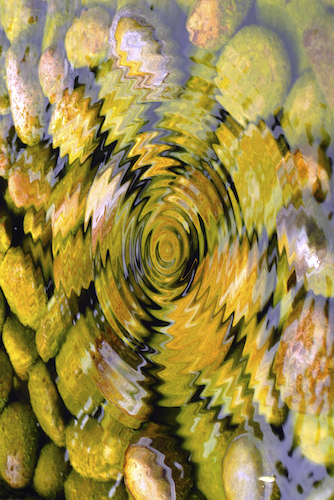Instructions for Not Following Instructions
(from Eugene Gendlin’s Introduction to Focusing)
Isn’t it wrong to publish instructions for inward personal process?
One danger with a set of instructions is that people might use them to
close off other ways. Anything human involves more than one method. Please
notice, we don’t say that this method is all you need or might find
valuable. Had we said that, we hope you would have thought us stupid.
Anything you learn here can go well with anything else that you may find
helpful. If there seems to be a contradiction, go easy. Let your own steps
find the way to reconcile the contradiction.
There are other reasons one might not like specifics such as these steps.
Instructions may seem to diminish mystery and openness, although that is
not so.
Also, written instructions cannot avoid misunderstandings. No formula fits
every person. Anyway, one must find one’s own path.
These problems occur with all types of knowledge about humans.
*Adopt a “split-level” approach to all instructions: *On the one hand
follow the instructions exactly, so that you can discover the experiences
to which they point. On the other hand be sensitive to yourself and your
own body. Assume that only sound expansive experiences are worth having. *The
moment doing it feels wrong in your body, stop following the instruction,
and back up slightly. Stay there with your attention until you can sense
exactly what is going wrong.*
These are very exact instructions for how not to follow instructions!
And, of course, they apply to themselves, as well.
In this way you will find your own body’s steps, either through the
instructions, or through what is wrong with them.
Focusing is always like that: You don’t push on if it doesn’t feel right, *but
you don’t run away either. *You go no further, but you back up only a
little, so that *you stay until what is in the way becomes clear.*
Focusing is quite safe. It may not work but it is not negative. So, if you
sense something that does not feel life-forwarding and sound in your body,
sense what that is until that opens.
But isn’t it the height of self-contradiction to give exact steps for how
not to follow instructions? Indeed. One often needs several attitudes at
once.
In a society increasingly skilled at human processes, of course we share
the specifics we learn. Shall we teach the specifics of driving a car and
not the specifics of finding and opening the bodily felt sense? But, human
processes do give rise to more different specifics than can be logically
consistent. Human nature is not fixed and not knowable in some single
system. That is fortunate. No knowledge can push you out of the driver’s
seat of your life. Especially not our knowledge here, which is to be about
finding *your own process!*
Therefore this knowledge, here, must arrange for itself to be superseded by
you, as you sense for what feels sound, inside you. Instructions for not
following instructions are the essence of focusing – one’s own inwardly
opening steps.
If you stop and sense what’s wrong at any point, and if you wait there
until that opens and reveals itself, you can make good use of all sorts of
methods and instructions. You do any method better than its authors can
arrange.
https://www.focusing.org/gendlin/docs/gol_2234.html#ftnref1 Gendlin,
E.T. (2007). *Focusing* [Reissue, with new introduction]. New York: Bantam
Books.




